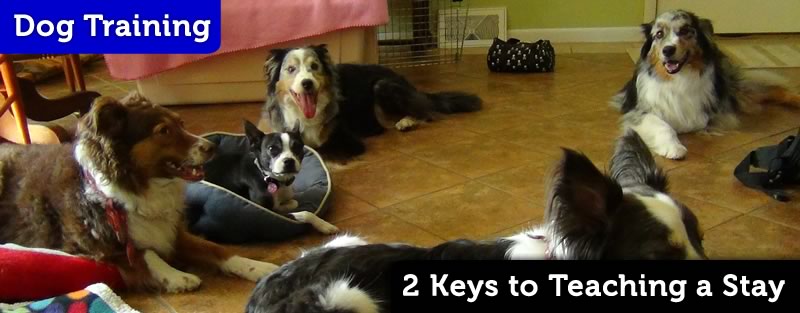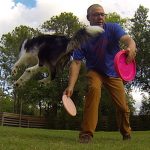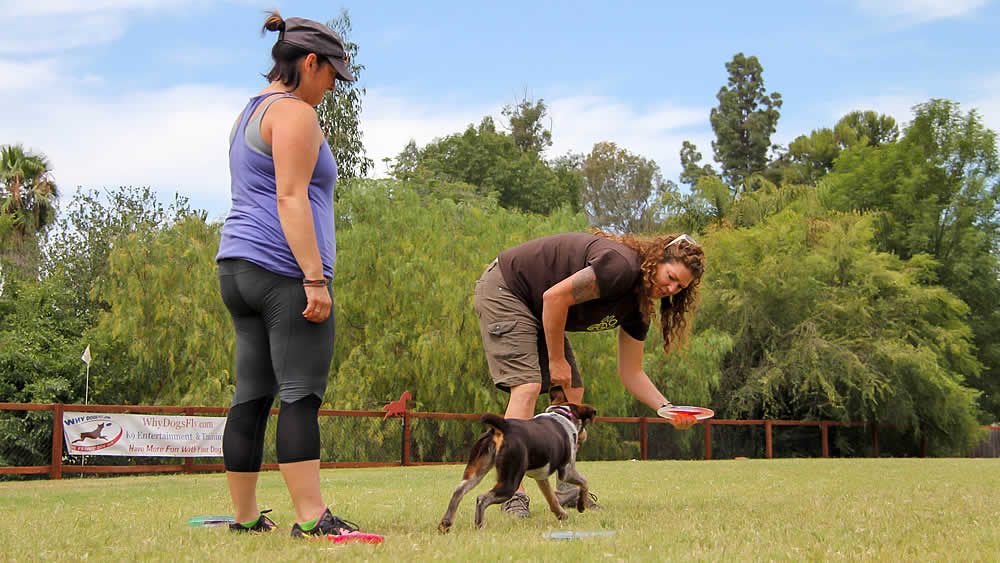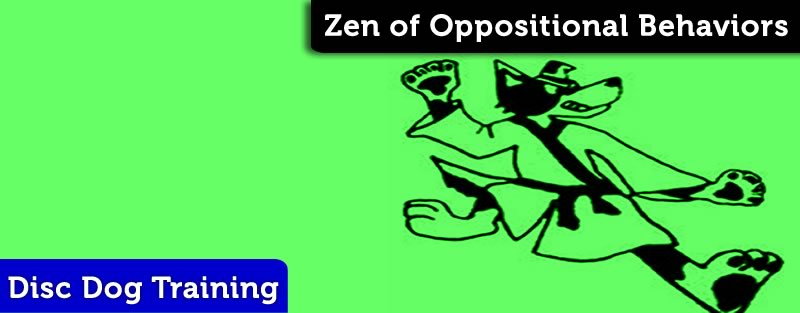
2 Keys to Teaching a Dog to Stay
Action
It is important to understand that duration behaviors, have 2 components. Action then Duration.
Many clicker trainers have problems with duration because they are primarily focused on marking and reinforcing action. After the Action component has been performed there is really nothing left to mark. All that’s left to do is to reinforce and add value to the position. So after the marking of the Action there will be no additional marking as we pay the dog for duration.
If the handler does any marking of behavior during a Duration skill, it should be focused on good decisions made by the dog – starting to but deciding not to get up, for instance, unsolicited eye contact Unsolicited eye contact or Attention is a great way to hook up with a dog. If you have something the dog wants he should give eye contact in order to get access to... More, perhaps, shifting to a more relaxed position, etc.
Unsolicited eye contact or Attention is a great way to hook up with a dog. If you have something the dog wants he should give eye contact in order to get access to... More, perhaps, shifting to a more relaxed position, etc.
Excessive marking of behavior during duration behavior training tends to teach the dog that action makes things happen. This leads to fidgeting, superstitious behavior and general trouble in getting calm duration.
Seemingly simple behaviors can be broken down into many root concepts. We can mark and reinforce any or all of these root concepts so we can shape the behavior and/or to draw attention to them for use in the future. Spot training offers us several active root concepts that we can teach our dogs that will come in handy in other situations:
- Targeting
Acknowledgement of, interest in and/or Approach to the Spot. - ThresholdA dog’s working state can be said to be over or under Threshold. A dog that is over Threshold has trouble working. A dog that is under Threshold is in good shape to... More
The physical boundaries that define the spot Spot is a “go to a place”, or “go to a mat” behavior. This means that the dog seeks out and performs a duration behavior on a spot of the handler’s choosing. A... More.
Spot is a “go to a place”, or “go to a mat” behavior. This means that the dog seeks out and performs a duration behavior on a spot of the handler’s choosing. A... More. - Foot Target
Foot or feet on the spot. - Duration BehaviorAny behavior performed until the handler wants it to stop is a Duration Behavior. Duration Behaviors have 3 parts. There is an action,”Yes!”. Then there is the duration part filled with Classical Conditioning... More
Stand, Sit or Down - Off
Release Release has many meanings in disc. Throws and throw variations can be referred to as releases. Sometimes you talk about the dog releasing something, the toy, or the environment, as in to stop... More from the Spot
Release has many meanings in disc. Throws and throw variations can be referred to as releases. Sometimes you talk about the dog releasing something, the toy, or the environment, as in to stop... More from the Spot
All of these actions can be isolated and worked. Problems that we have with this behavior can be resolved by focusing on one or more of these root concepts.
Duration
Duration is a function of math.
You need to pay our dog at a rate of reinforcement that is guaranteed to keep the dog in position that the duration behavior requires. It is your responsibility as a handler to ensure that the dog maintains position.
In the spot training exercise, you’ll pay at a blistering rate of 1 reward per second initially in order to add value and maintain position. You’ll start to reduce the rate of reinforcement as the dog starts to desire to perform the skill.
Positive Markers mean something. You don’t have to mark to give a cookie.
The Release Defines Duration
Duration, as defined is the time between the beginning and the end. Many times, especially when working multiple dogs, the dog is never released from the duration behavior or frequently releases himself while the handler is distracted.
If you are not releasing our dogs from a behavior you are not working duration. It’s as simple as that. You’re simply adding or reducing value on the duration behavior depending on what happens after the dog breaks position.
Desire before Duration
The idea here is to create desire to perform a behavior before we go and ask for duration. We then use that desire to perform the behavior to our advantage by making the dog believe that performing the behavior is an opportunity.
“What? I get to do Spot now? Sweet!”
Compare and Contrast
Once the dog has a strong desire to perform a given behavior we are then able to compare and contrast the performance of that behavior with the non-performance of the behavior.
This is where many trainers blow it. We are so concerned with our dogs getting the behavior right – NOW! – that we fail to let them learn for themselves that doing this behavior is totally worth it.
When we cue a behavior that is not yet strong and nothing happens, that is the lesson.
The dog is able to compare and contrast the rapid fire reinforcement – 15-30 rewards per minute for correct performance with zip, nada, nothing for however long they are derelict in performing the behavior.








Hi Ron and Apryl! I can’t help but feel like when I ask for the ‘off’ the pedestal and reward that I’m reinforcing a behaviour I eventually don’t want. When I give the release, should not the getting off the pedestal be enough reinforcement? I feel like the ratio of (cookie) reward should be mostly while on the pedestal and the release be just that…..the release. Am I getting ahead of myself or misplacing my reinforcement?
Here’s a response:
http://pvybe.com/training-multiple-dogs-course/week-2-adding-a-dog/paying-the-release/ –
You are correct in being concerned with the ratio of cookies on release vs pedestal. There should be a great difference in that ratio, as a product of the learning phase. The ratio is probably 20:1.
And once the skill is taught you can reward with Go Do Dog Stuff or go Variable.
We believe the benefits outweigh the drawbacks.
And besides, once you really start to spread reinforcement out to less than 1 cookie per minute or so the dog is doing the behavior because,”That’s what I do in this situation,” anyway. It’s not a big deal.
peace